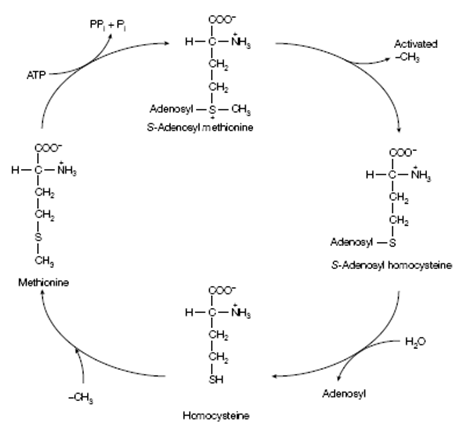Activated methyl cycle:
S-Adenosyl methionine serves as a donor of methyl sets in numerous biological reactions example for in the formation of creatine phosphate and in the synthesis of nucleic acids. It is produced by the action of the activated methyl cycle. In during donation of its methyl group to another compound, S-adenosyl methionine is transformed into S-adenosyl homocysteine. To reproduce S-adenosyl methionine, the adenosyl group is erased from the S- adenosyl homocysteine to form homocysteine. This is then methylated through the enzyme homocysteine methyltransferase, only two vitamin B12- holding enzymes found in eukaryotes, to form methionine. The concluded methionine is then activated to S-adenosyl methionine with the release of all three of the phosphates from ATP.

Figure: The activated methyl cycle.